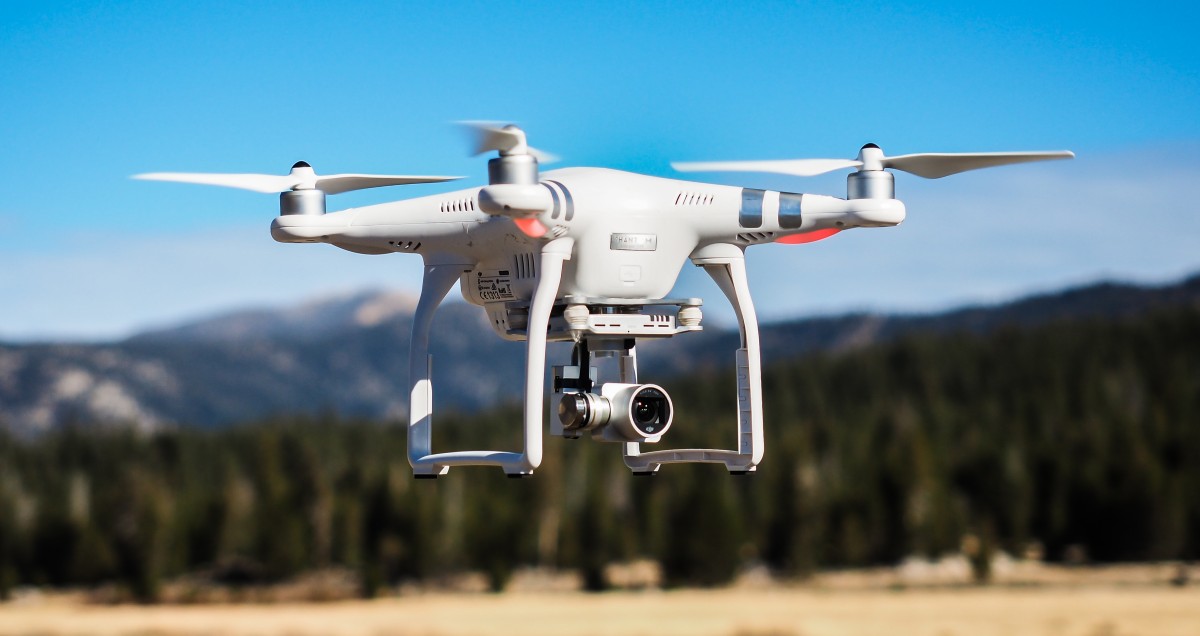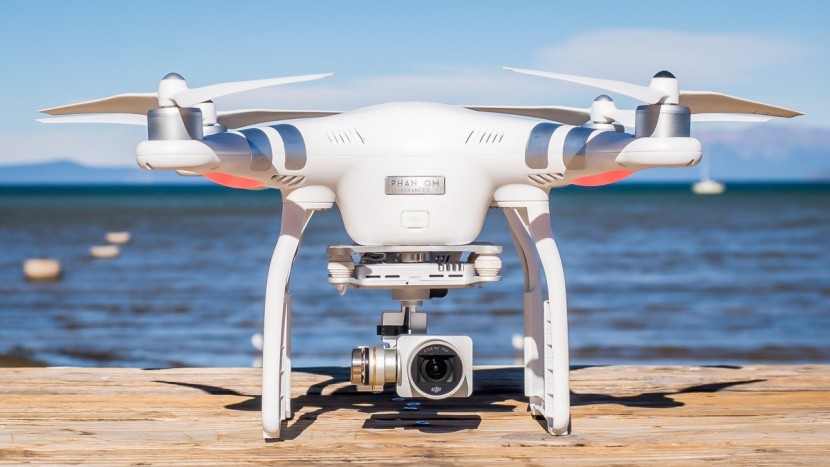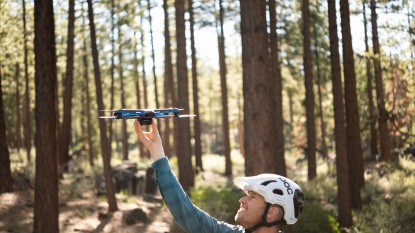DJI Phantom 3 Advanced Review
Our Verdict
Our Analysis and Test Results
Video Quality
The Phantom 3 Advanced scored alongside the Phantom 3 Standard, at the back of the pack of gimbal models, which had scores ranging from 6 to 10. The non-gimbal models scored 3's in this metric. Video from the 3 Advanced's 2.7K camera looked high quality and produced good colors, but when viewed closely could be seen to be slightly less sharp than footage from other cameras. It also had the common DJI problem of creating color aberrations when looking towards the sun, and this issue seemed to be just slightly worse than in the higher end Phantoms. The gimbal on the 3 Advanced is quite steady. It was able to keep the camera locked in on sweeping landscape shots and long panning shots. It shook more readily when flying fast than the Phantom 4's gimbal, but outperformed the Phantom 3 Standard in this regard.
Like all the Phantoms, the Phantom 3 Advanced does suffer from some propellor intrusion problems, specifically when flown aggressively or pointing at the sun. These issues will only be present in a small minority of shots, and can be avoided with some practice. However, if propellor intrusion is a big pet peeve for you there are models, like the GoPro Karma Quadcopter, that do a much better job of avoiding it.
Ease of Use
The Phantom 3 Advanced has all best trappings of a DJI designed user experience. It shared the score of 8 in this metric with a number of other models, well distancing itself from the low score of 3 and close to the top score of 9. Taking the drone out of the box, installing propellers, downloading the DJI GO app, running through initial setup, and the connecting the drone, controller, and smartphone all went off without a hitch. The 3 Advanced's controller is nearly identical to those of the other Phantom models (with the exception of the 3 Standard). This is our favorite controller of the bunch with its ergonomic feel and well designed joysticks. Our only real complaint is that the on-screen menu is a little crowded, and could possibly be a bit more streamlined.
A large red record button lets you know when you're capturing footage. Take off is completed by pressing a button on the on screen menu and then sliding an unlock bar. This automatically takes the drone off the ground and puts it into a low hover, eliminating the stress of this first maneuver. Once in the air the good video downlink and ergonomic controls quickly start to feel natural. After a few minutes you'll probably have gained enough confidence to frame some nice panning shots. Once you get the drone back to you an automatic land feature settles it down gently at the push of a button.
Flight Performance
Flight performance did not vary much amongst the gimbal models, with scores ranging from 6 to 9. The Phantom 3 Advanced sat right in the middle of this group with a score of 8. The non-gimbal models both scored 5 in this metric. In all aspects of flight the Phantom 3 Advanced was stable. It made it through takeoffs and landings without issue. The orbit point of interest and cable cam features put it on smooth, stable flight paths and produced good, stable footage. We also didn't have any issues when testing its automatic return to home function, though we'd like to stress that this feature should only be used if something happens that disallows you from flying the drone back yourself. The Phantom 3 Advanced scored an 8 in this metric because, though it felt stable and locked in all aspects of its the flight, it couldn't quite compare to the rock solid stability of the top scoring Phantom 4. The Phantom 3 Advanced has a maximum flight time of 23 minutes. This is slightly less than some of its competitors, but in no way limiting. Twenty-three minutes is a long time to be in the air.
Video Downlink
The Phantom 3 Advanced scored an 8 in our video downlink testing. This put it right in the middle of the tightly packed group of gimbal models, which scored from 7 to 10, and well ahead of the non-gimbal models, which both scored 4. The downlink provided an uninterrupted video stream throughout all of our flights, even when we took the drone 3000 feet from the controller. The on-screen video quality of the downlink was just slightly less crisp than that of the top-scoring models, but this certainly would not get in the way of framing and capturing the footage that you want.
Customer Service
Customer service is not DJI's forte. They earned the worst score of 3 in this metric, far off the top score of 9. The phone line seems to always have a long wait, and submitting requests via email rarely get a timely response. If you're thinking about a DJI drone, we suggest buying from a reputable dealer with a good return policy and customer service. This would protect you from the improbable, but not impossible, risk of ending up with a defective product.
Value
The Phantom 3 Advanced comes with a list price of $1000, but can often be found online for substantially cheaper. Given its performance, this feels like a fair value. However, the price puts it in a bit of an odd spot. If you're most concerned with capturing good video footage, you can save a good chunk of money and get the Phantom 3 Standard, which produces footage that is just as good. The Autel X-Star Premium produces slightly better video for close to the same price. Both these options would probably represent a better value for videographers on a budget. If you really want more performance, you can spend a bit more and get the class-leading Phantom 4, which is definitely a better value if you're looking for the very best.
Conclusion
The Phantom 3 Advanced is a good, capable camera drone. However, there are few drawbacks to saving some money by getting a cheaper Phantom, and there is a lot to be gained by spending a bit more to get a higher end Phantom.






